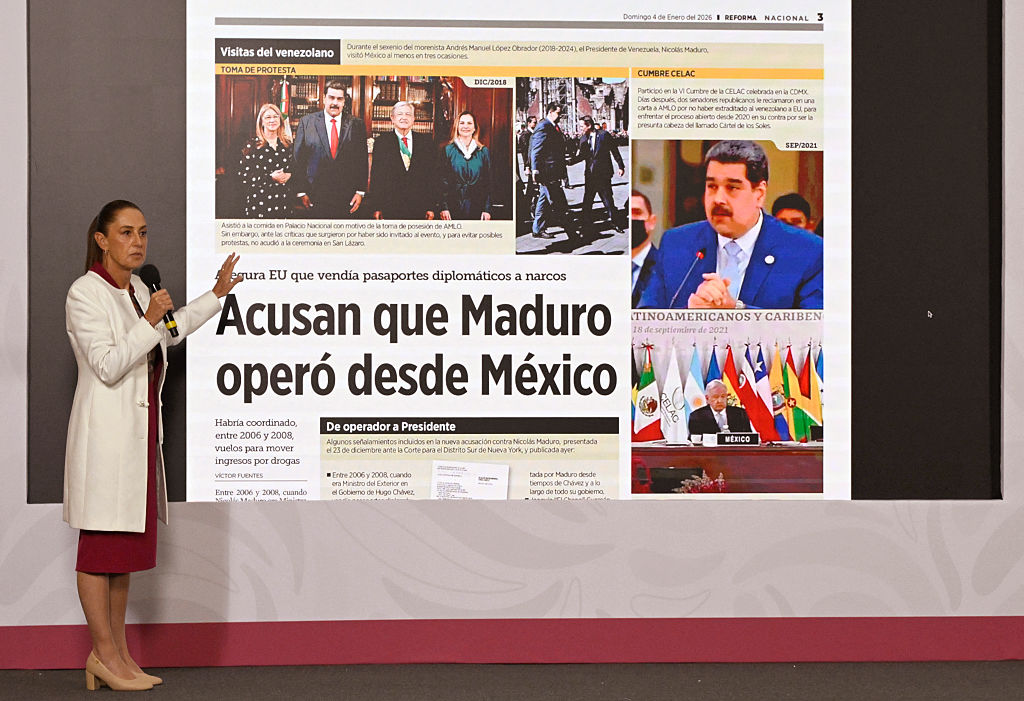Strategic Infrastructure in Latin America: A Key Pillar of Competitiveness and Economic Growth
Strategic Infrastructure in Latin America: A Key Pillar of Competitiveness and Economic Growth
Speakers at this October 29 featured experts from the Mexican government, multilateral organizations, and the private sector. Their discussion focused on project financing, public-private partnerships, and regulatory frameworks to attract private investors.
Speakers:
- Juan Molinar Horcasitas, Secretary of Communication and Transportation of Mexico
- Duncan Caird, Head of Project & Export Finance, HSBC
- Enrique Bascur, Managing Director & Latin American Department Head, Citigroup Venture Capital International
- Ragnhild Melzi, Senior Director, Public Policy Programs, AS/COA
- Jordan Schwartz, Lead Economist for Infrastructure, Latin America and the Caribbean, World Bank
Summary
On October 29, AS/COA hosted a panel focusing on infrastructure, featuring experts from the Mexican government, multilateral organizations, and the private sector. Speakers offered their view on infrastructure investment opportunities and challenges, focusing on project financing, public-private partnerships (PPPs), and regulatory frameworks to attract private investors. Mexico’s Secretary of Communication and Transportation Juan Molinar Horcasitas gave an overview of Mexico’s infrastructure projects and policies implemented to attract private investors.
Remarks by Secretary Juan Molinar Horcasitas
In his keynote speech, Secretary Horcasitas focused on three topics: the role of Mexico’s Secretariat of Communication and Transportation; short and long-term goals for Mexican infrastructure investment; and major projects underway in the country. Highlighting the importance of infrastructure to economic growth, Horcasitas explained how the Secretariat’s role is fundamental for the development of a broad range of infrastructure projects in a manufacturing country like Mexico. Horcasitas noted that President Felipe Calderón’s government has taken significant steps to demonstrate its commitment to infrastructure development, including an economic policy centered on increased public spending. In 2007, President Felipe Calderón launched the National Infrastructure Program (NIP) to boost the expansion, quality, and the competitiveness of Mexico’s infrastructure. The NIP includes more than 700 highways, 12 bypasses, and port development. When finished, the port of Lázaro Cárdenas will be the second biggest in Latin America.The secretary also explained that the government plans to submit a new bill to Mexico’s Congress in order to better regulate and facilitate PPPs. These partnerships are expected to result in infrastructure investments of as much as $8 billion for 2010 and 2011 in Mexico.
Infrastructure sparks economic growth and competitiveness
During the panel, The World Bank’s Jordan Schwartz explored how infrastructure promotes growth and generates employment. But in terms of infrastructure’s expenditure, he warned, Latin America lags behind other regions of the world. Historically, it has dedicated around 2 to 3 percent of GDP on infrastructure, while East Asian economies average between 6 to 10 percent.
CVCI’s Enrique Bascur noted, however, that infrastructure investment remains one of the largest economic activities in emerging countries. Schwartz also noted that, despite a 20 percent decrease in infrastructure investment in the second quarter of 2008, the region’s governments are committed to increase investment by 25 percent through 2010. Speakers also noted that almost the entire region is witnessing a return to economic growth; domestic demand is improving and commodity prices are stabilizing.
Panelists observed that, for most countries, public investment remains the primary source of financing for infrastructure. Private sector participation in infrastructure should increase as private investors bring much needed capital—often more than what governments can provide on their own. Attracting private sector investment requires stronger regulatory and institutional frameworks, more transparent contracting, and innovative financing structures that make projects less risky and improve returns. HSBC’s Duncan Caird stressed that the ability to assure predictably rests at the core of attracting private investment.
In conclusion, speakers agreed that the region must focus on increasing investment in infrastructure from both the public and private sectors. Creating avenues to increase investment presents considerable challenges but the potential payoffs make it well worth the effort in terms of growth, competitiveness, and quality of life.








